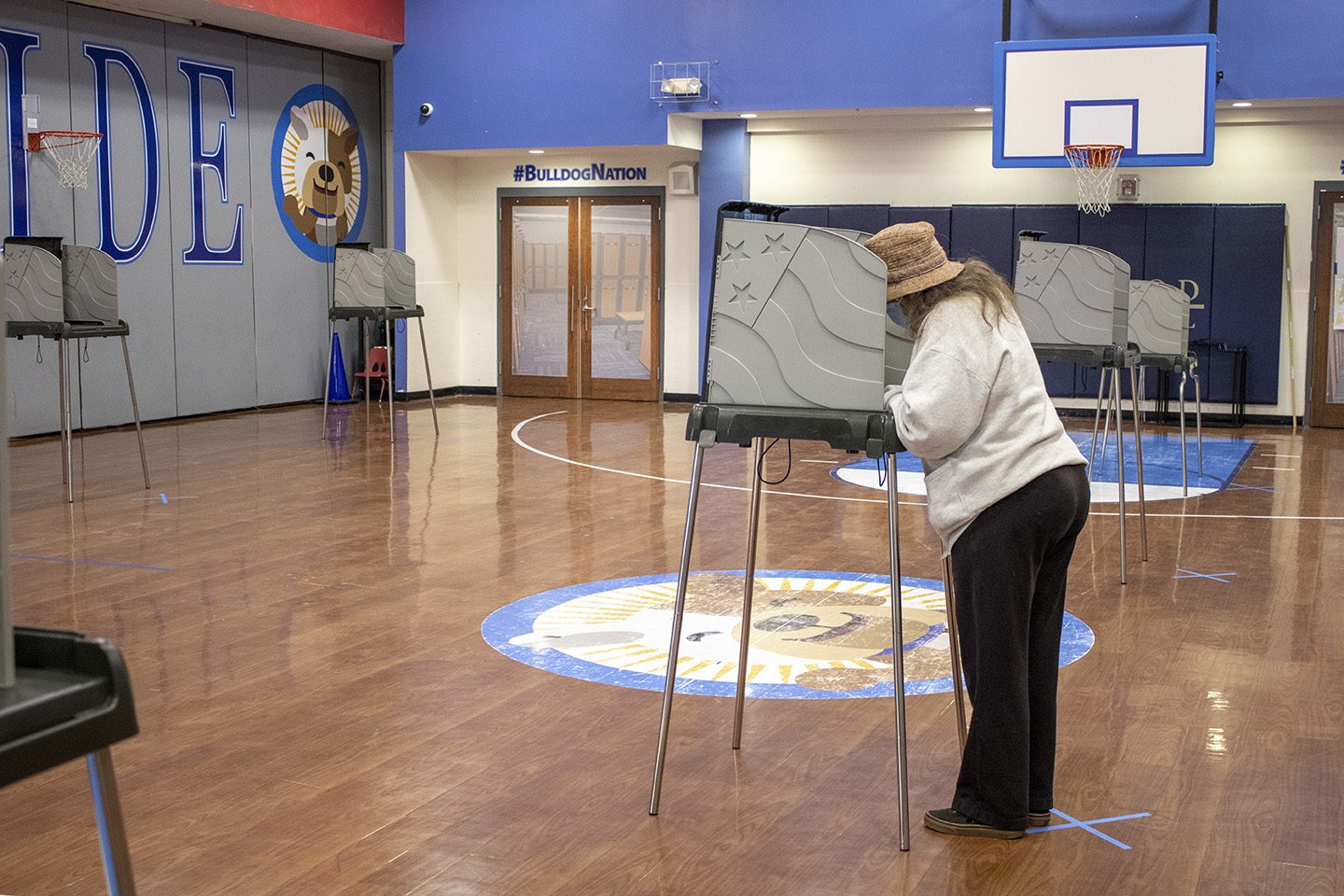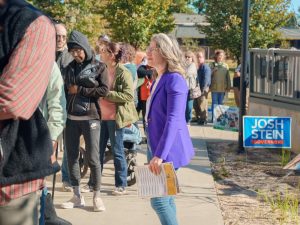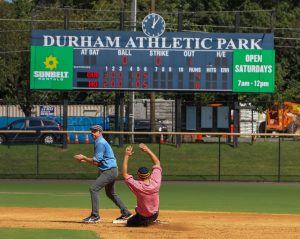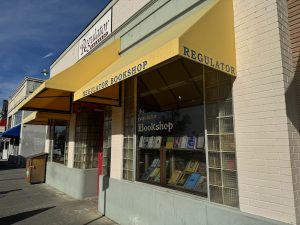The Durham primary election is coming up on March 5, and voters have a lot more to figure out than simply who they want in office.
A string of new laws governing how elections work is being rolled out in North Carolina this year, with some important changes going into effect before the primary. Primary elections can be confusing already, with so many offices holding elections, and these new rules laid out by the state legislature don’t make them any easier to navigate. Below, we’ve outlined the most important things for voters to know this election season to make sure their votes get counted.
Mail-in ballots
In past elections, there has been a grace period for mail-in ballots that arrive late, as long as they were postmarked by election day. This year, mail-in ballots must be received by election day, with no exceptions.
Plus, there is a new photo ID requirement for mail-in voters. Voters must include a photocopy of their ID in the envelope with their ballot. If voters don’t have ID or access to a photocopier, there is an exception form to include with the return ballot. This new, larger version of the ballot currently costs $1.63 to mail.
The deadline for requesting a mail-in ballot is February 27, one week before election day, but waiting until then may create too tight of a window. Kate Fellman, founder and executive director of You Can Vote, a North Carolina voter rights nonprofit, said a buffer may be necessary.
“It’s just extra, extra technical paperwork,” Fellman explained. “If you make one mistake and are not in compliance with every single check box, you’ll have to go back to the Board of Elections and fix it.”
Fellman recommends that people who must vote by mail request their ballots now.
Registration forms
A new voter registration form was recently released, requiring voters to give either their North Carolina driver’s license number or the last four digits of their Social Security number. According to Fellman, this question was optional in past versions of the form, and voters could bring their ID or residency document to present in person upon voting. Now, the Board of Elections will no longer accept registration forms without one of those numbers, she said. The form includes an option to indicate that you do not have an ID number or a Social Security number, but Fellman says it’s unclear what happens to forms with that box ticked.
This will be especially problematic for students and first-time voters, Fellman said. Many young people don’t have a North Carolina driver’s license, let alone know the last four digits of their Social Security number.
Plus, if they call their parents to ask for the number, it may not go well, even though there’s nothing one can do with just the last four digits.
“Their parents are going to say, ‘Don’t give it,’” Fellman explained. “‘Don’t give it away! What are you doing?’”
Same-day registration
Same-day registration is an option during all 17 days of early voting — February 15 through March 2 — but voters need to come prepared. To successfully register, you must bring proof of residency and a photo ID.
Proof of residency is anything with a voter’s current address and name on it, such as a lease agreement or a utility bill. Accepted forms of photo ID include a wide range of options. And, of course, voters must be prepared with either their driver’s license number or the last four digits of their Social Security number.
Photo ID
Voters need to bring one of the accepted forms of photo ID with them to the polls, even if they are already registered. However, if you don’t have a photo ID, you can still vote — there is an exception form. You will be given a provisional ballot, but as long as your exception form is deemed valid, your vote will count.
This policy was rolled out in the municipal elections in the fall, but is still relatively new to voters and poll workers alike. Fellman said that there is a lot of confusion about what is and isn’t acceptable, and Derek Bowens, director of the Board of Elections for Durham County, agrees. Election workers seem to have a good handle on it, but there are “at times, mix-ups in understanding,” he said.

Provisional ballots
If voters slip up on any of the requirements, they are likely to be given a provisional ballot. Provisional ballots are essentially put on hold and may or may not be counted, depending on whether the voter’s case gets resolved. Some get resolved more easily than others — voters who forget their photo ID will be given a provisional ballot that will be counted as long as they come back and show their ID later, for instance. However, some are more taxing for the voter to fix.
Students and transient people are more likely to receive provisionals, because their registration is more likely to be out of date. Out-of-date registration is a common reason for getting a provisional ballot, and many college students change addresses annually. Students can update their registration until the registration deadline, February 9. If they miss that deadline, they can also update their address using same-day registration during the in-person early voting period. But, if they show up on March 5 without valid registration, they will be given a provisional ballot.
Gunther Peck, associate professor of public policy at Duke University, worries that provisional ballots lead to fewer younger voters’ ballots being counted. “The throw-out rate for provisional ballots… has been just inexorably climbing,” he explained.
Provisional ballots can also serve as a sort of blanket solution for issues that arise at the polls, he said. “If you have a problem voter… you give them a provisional, and the problem goes away,” Peck said. “It’s crowd control. It keeps the line moving.”
Signature-matching program
Lastly, Durham is one of 10 N.C. counties piloting a new signature-matching program for mail-in ballots. The software will compare the voter’s signature on their ballot to their past signatures on file. Because this is a pilot program, the results will not affect whether or not any ballots get counted in this primary election.
Still, the pilot program is raising concerns about the potential for erroneous ballot elimination in future elections. According to Bowens, 90% of new voters register at the state Division of Motor Vehicles, where they sign on an electronic pad as opposed to paper. Those electronic signatures may not match up with voters’ handwritten signatures on their ballots.
“That’s definitely concerning,” said Bowens. “We look at those signatures every day, and we definitely see a big difference.”
The program could also pose a threat to the votes of disabled citizens in the future, Fellman said. “We work with folks who have lost limbs that need to use a pen in their mouth– how do you account for matching those types of [signatures]?”
New election rules could generate confusion for voters and poll workers alike. When difficulties arise, the discretion of each individual poll worker may lead to varying results.
“Just because there’s a uniform document does not mean the application is the same,” Bowens said.
So, voters must plan ahead, come prepared, and leave buffer time to make sure their voices get heard. Peck emphasized the importance of minimizing the margin for error at the polls: “You need to have accuracy to have voting rights.”
***
For more information:
Pictured above: A Durham voter casts her ballot in the 2021 election. Photo by Josie Vonk — The 9th Street Journal











